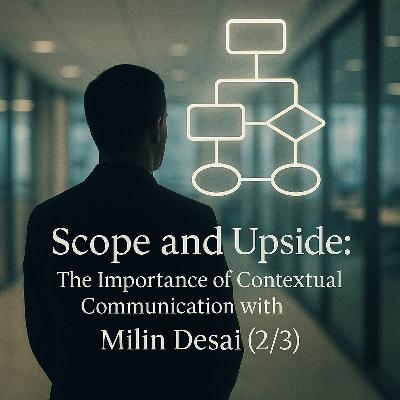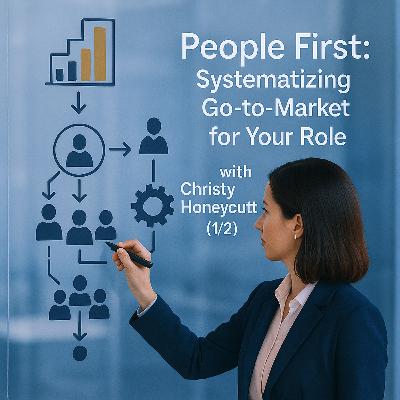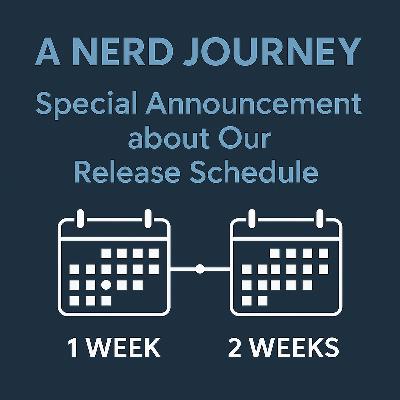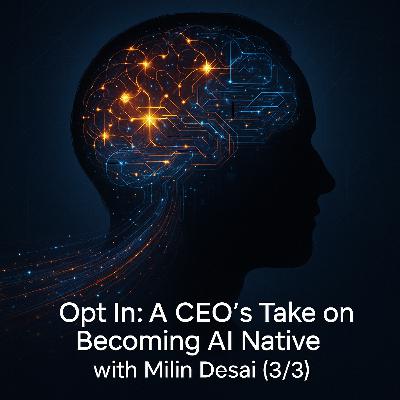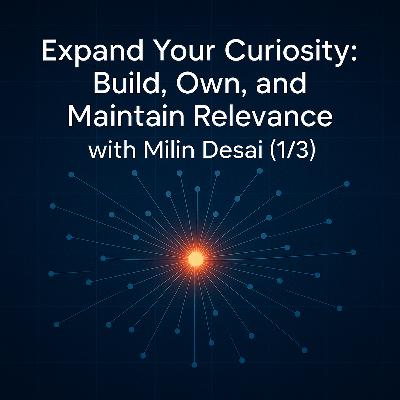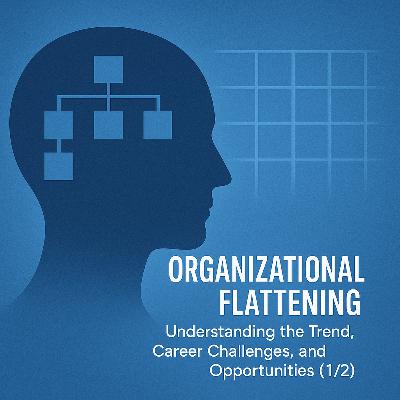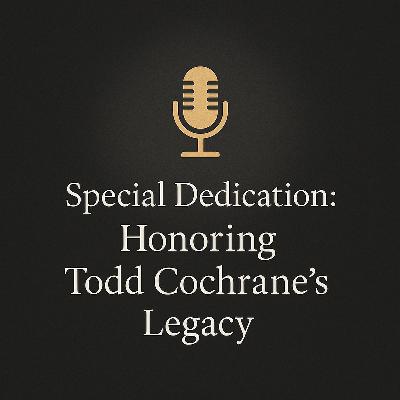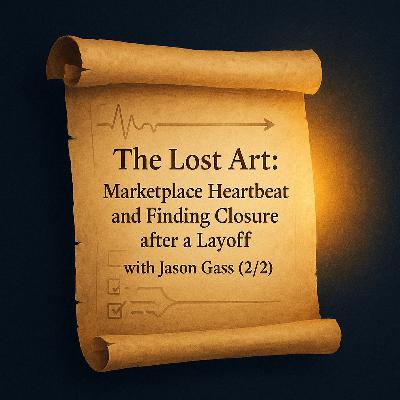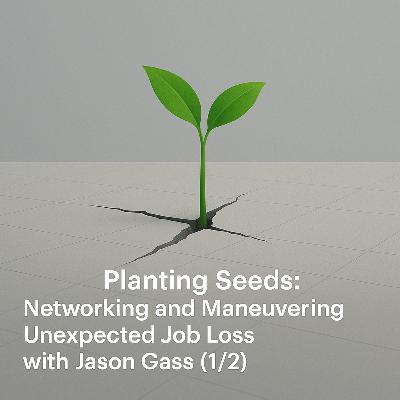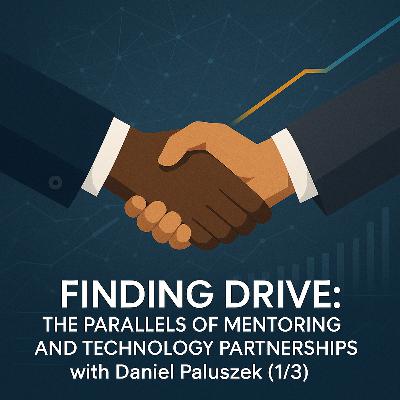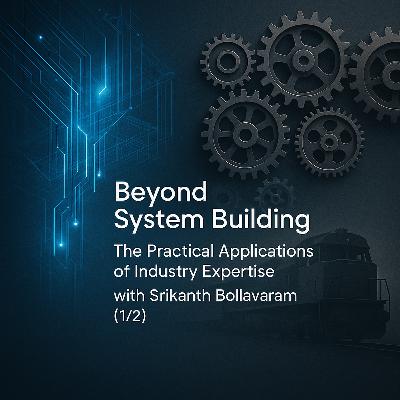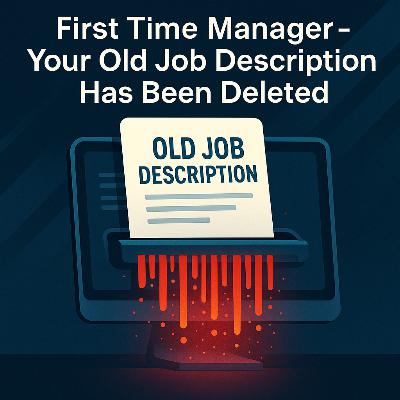Scope and Upside: The Importance of Contextual Communication with Milin Desai (2/3)
Description
When we use a generative AI tool, providing more context can often lead to better output. What if we could apply this to our communication with other humans? Milin Desai, the CEO of Sentry, says contextualizing communication will change the way you operate.
This week in episode 350, we’ll follow Milin’s story of changing companies and pursuing different levels of leadership. Listen closely to learn about the importance and impact of active listening, how practice with written communication can help us develop a clearer narrative, the skills needed in higher levels of leadership, and how we can evaluate new opportunities through the lens of scope and upside.
Original Recording Date: 09-29-2025
Milin Desai is currently the CEO of Sentry. If you missed part 1 of our discussion with Milin, check out Episode 349 – Expand Your Curiosity: Build, Own, and Maintain Relevance with Milin Desai (1/3).
Topics – Customer Discovery and Active Listening, Contextual Communication and Iterating on a Narrative, Scope and Upside, Necessary Skills at Different Leadership Levels, Enabling Active Participation
2:49 – Customer Discovery and Active Listening
- What Milin said without stating it explicitly was that we need to do a better job of asking people more questions to understand where they are coming from and what they care about. This is what Nick refers to as doing discovery, and it applies to the person working a ticket in IT just as much as the product leader or sales engineer working with a customer.
- “AI is best when given the best context, so contextualize every conversation. And if you contextualize every conversation, it will change how you operate.” – Milin Desai
- Milin gives the example of a support technician doing the work to close a ticket for someone but then taking a proactive step to let the submitter know there are other related issues you could help resolve. He classifies this as the “extra step” that some people just do without being asked.
- Very few people are self-aware and like to rate themselves as the best at different things.
- “That self-assessment is super important…. That extra juice that people are looking for is that contextualization, that personalization, that dot connecting…that is what will change you. And that comes with being curious, asking the questions, listening…active listening.” – Milin Desai
- Milin says active listening is difficult for him, but it’s something he has become better at over time.
- John says sometimes the question a person asks is not the question that person wants the answer to. It’s not up to us to just answer the question that was asked. It’s up to us to go the extra mile and ask questions to get more of the context.
- Milin shares an anecdote for people in customer-facing roles. Validation that a product pitch is resonating with a customer comes from active listening and questions. But there’s even more.
- “But you forgot to ask a simple question…in the next six months, if you had a dollar to spend, would you spend it on this? We forget to ask the most important question. If I’m going to build it, will you use it? Will you buy it?” – Milin Desai
- Without asking the above questions, product teams may relay that feedback from a customer was nothing but positive and not understand why product activation numbers are low.
- We need to figure out why a customer would use a product or feature rather than assuming they will use it when it is pitched / suggested to them. Be intentional about understanding the customer’s priority as well.
- “The same principles apply to development and everything else in our lives too. If you only had an hour a day, what would you do with it? Start thinking that way, and it makes things very, very simple.” – Milin Desai
- Nick says we could also ask about priority when pitching an internal project idea to management. Would someone approve the project in the next six months? John suggests asking how far out in someone’s priority list a project would be.
- What if your project idea or the product you are pitching is not on someone’s priority list? Should you just stop there?
- At this point with time left in a meeting you have options. Asking to tell someone what you are building is a mistake, and so is just ending the meeting.
- “What if you spend the next 5 minutes asking, ‘what is the most important things you’re thinking through?’ Because yes, it may not be the current thing you are doing, but again, coming back to knowing what other people in the company are doing, it could be connected to another initiative, another project, another product that the team is building. So, coming back to the same curiosity we talked about, and knowing what’s happening around you, you may find something. Or you may just learn…. But you came ahead as a high IQ individual who is saving them time, who cares about them more than they care about selling a product.” – Milin Desai
- It’s important that we learn to pause in this way to gain understanding. Asking someone what they feel is important or what their priorities are after they’ve said something is not a priority is an acknowledgement that what you brought them isn’t relevant.
- Learning more about the priorities of your audience may bring about an opportunity for a different group / team if you’re plugged into what is happening in other parts of your organization.
- One option is nothing comes of it, and you learn something.
- Nick says once we learn what someone thinks is important, we might get a much better idea than what we originally came to the meeting with.
9:00 – Contextual Communication and Iterating on a Narrative
- John says this goes back to empathizing with the customer and living in their shoes. Part of this job is to collect customer priorities and report it back to your organization. This information might indicate a product a company is building does not solve the right customer problems or doesn’t align with customer priority.
- From a career perspective, people might think they need to do all of this alone – get on the customer calls, understand what customers want, and synthesize it to relay to other teams.
- When Milin was a product manager, he started pulling in other team members to be on customer calls with him. This began when Milin was at Riverbed, but Milin tells us he leveraged it much more during his time at VMware.
- “The interpretation of that conversation can be very different…. After that call is finished, you ask for their interpretation. Did they have happy ears? Did you have happy ears? But more importantly you as a team get on the same page about the opportunity.” – Milin Desai
- Milin is speaking about promoting collaboration between product managers and engineering teams by ensuring the engineering team members have access to the same set of information. Getting them to hear information straight from a customer helps promote alignment better than receiving feedback only via the product manager who spoke to the customer. Being part of the live conversation is also better than only having access to the recording.
- Letting other members of your team that you work closely with participate along with you is extremely important according to Milin. You don’t need to do it alone.
- From a career perspective, people might think they need to do all of this alone – get on the customer calls, understand what customers want, and synthesize it to relay to other teams.
- “So, I think that participation is really important, and the second most important thing in any career progression, anything from non-tech or tech, is communication…contextual communication…. Talking to a VP versus an EVP versus a CRO…everyone is different. We as humans don’t spend enough time on contextual communication in our personal or professional lives. And I would say the single biggest thing I see people make a mistake on is not invest in communication, written form communication….” – Milin Desai
- If communicating to an engineering team, have them feel they were in that conversation. Give them a synthesis of the problems you talked about and what happened as a result.
- Storytelling and communication are important to provide your perspective on what happened to others.
- We can write our thoughts down and then iterate on them. When the thoughts are fully formed, we can share them with a group. Spend time writing down your thoughts, and contextualize them for the audience with which you are sharing them.
- When we write down our thoughts in draft form, Milin says it should feel natural and not take a lot of time. The story arc can be cleaned up as a next pass / next iteration.
- If communicating to an engineering team, have them feel they were in that conversation. Give them a synthesis of the problems you talked about and what happened as a result.
- John mentions there is a difference between a transient idea and something you take the time to articulate through writing. The latter is something you can understand and have a conversation with others about. John talks about writing as something that enables fully formed thoughts and the evolution of those thoughts.
- Milin had the opportunity to work for Marin Casado (founder Nicira), and Martin encouraged people to write things down because “you don’t think in PowerPoints.”
- Milin has developed a habit of writing over time. When he gets an idea, even if it is sitting on a train, he might write it down and save it in his e-mail drafts folder to get it out of his head. Milin will then come back to it later (a day, a week, etc.) to refine it and then share with a larger audience.
- Martin Casado also encouraged people to think like a story

